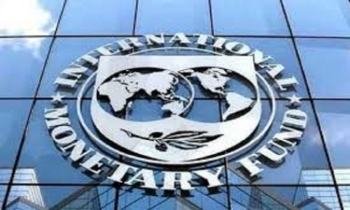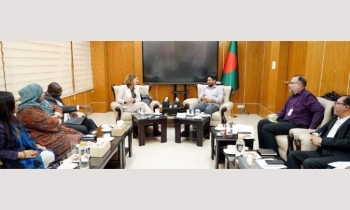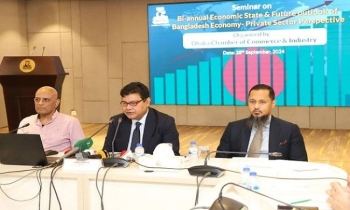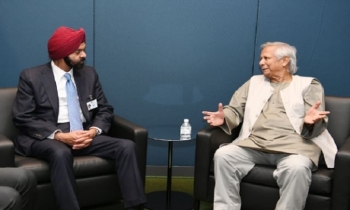50 years of Bangladesh: Experts diagnose the country’s economic transformation
BI Report || BusinessInsider
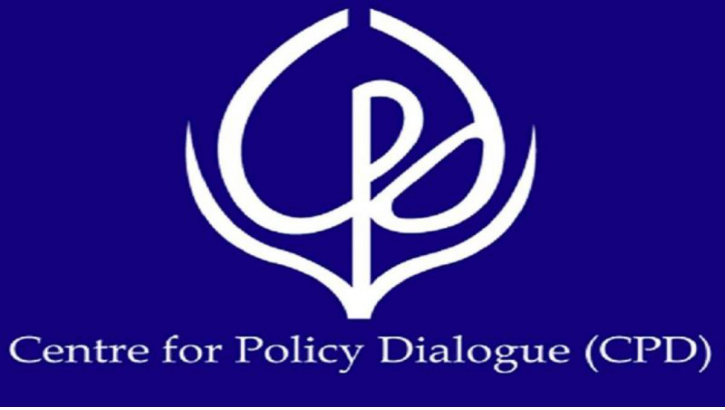
CPD logo
Civil society think-tank, the Centre for Policy Dialogue (CPD) has been organising a 4-day-long virtual international conference titled “Fifty Years of Bangladesh: Retrospect and Prospect”.
On the second day of the conference CPD discussed Bangladesh’s economic transformation where three papers were presented on three different topics. Professor Geof Wood, Emeritus Professor, International Development, Department of Social and Policy Sciences, University of Bath, chaired the session.
In his presentation Dr Syed Akhter Mahmood, former lead private sector specialist of the World Bank, discussed Bangladesh’s economic transition over the past 50 years. He talked about Bangladesh’s impressive growth since independence in terms of synergies between government actions and market responses and synergies between different economic variables.
The paper argues that Bangladesh’s story of steady growth with peaks can be found for several variables that play a key role in the overall growth story, such as irrigation coverage, private credit flows, rural roads, remittance flows, agricultural machinery imports, power generation, and mobile financial services.
Mahmood advocated that part of the reason Bangladesh has grown at a fast pace was because of a sequence of turning points and the way they worked together. He also discussed how key economic variables often had turning points and accelerations of growth at the same time.
He illustrated that policy actions, such as public investment projects in different areas, were implemented because of responses in the market or economy. This led to a pattern of growth of different economic variables, he noted.
“The government often responded to new demands with new policy actions. With this approach, instead of going all in at once, the government usually tested the market with some activities and responded with more actions after it saw how the market responded,” he said.
The other part of the synergy story is about how policy actions and market responses worked together. Agricultural policy, rural road expansion, trade and industrial policy, and mobile financial services are just a few of the policy areas that he looked at to show how they worked together.
Mahmood concluded by saying that Bangladesh’s economic success was largely due to a gradual and adaptable policy stance that always made room for new businesses, leading to a process of cumulative change.
The second paper titled “Bangladesh Transitioning from LDC to Post-LDC Future: Challenges and the Next Steps” was presented by Prof Mustafizur Rahman, distinguished fellow of CPD. He discussed the future of the Bangladesh economy after its graduation from the least developed country (LDC) group.
He said Bangladesh was included in the LDC sub-strata in December 1975 and the country is expected to graduate from the LDC group in 2026 since it has met all three graduation criteria.
“This reflects Bangladesh’s remarkable achievement in key socioeconomic development indicators, and international acknowledgement of this success,” Rahman said.
He said while this recognition is impressive and will open up new opportunities; this graduation will also create new challenges for the country.
Bangladesh is among the few LDCs that have reaped significant benefits from the special and differential treatment given to LDCs under several WTO agreements and has enjoyed preferential market access to several developed and developing countries, said Prof Rahman.
“For this reason, Bangladesh could pursue its policies with a high degree of autonomy. This has given exporters a competitive advantage and contributed significantly to the Bangladesh economy’s global integration,” he said.
Consequently, he said the LDC graduation may cause the loss of the international support measures, which will have a disproportionately large impact on the Bangladesh economy from both domestic policy space and the global market space. The second graduation, the middle-income graduation of Bangladesh, will have other implications for the country’s economy, he added.
“As Bangladesh goes forward in the future years, identifying the challenges in light of the dual transition and the strategies to be taken in addressing these challenges is of heightened concern and interest,” he said.
He discussed that the duties of managing the two graduations are deeply entwined and should be considered as mutually reinforcing endeavours. Adding to this, he cited many examples of countries, such as the Philippines and Brazil - that have achieved the transition but are now stuck in the middle-income trap for over 30 years.
Prof Rahman also stressed on the problems of strengthening regional integration in trade-related areas as he thinks it is vital to mitigate the negative impacts of preference erosion and for ensuring the sustainability of LDC graduation.
The third and last paper was presented by Prof Selim Raihan on the institutional challenges in Bangladesh’s economic transformation, which discussed Bangladesh’s outstanding economic growth and development over the past five decades.
“Bangladesh’s strong economic and social advances have not been matched by equal improvements in institutional development, and thus Bangladesh’s institutions are still weak and are poorly ranked among other institutions in the world,” he said.
In the face of weak institutions and economic pressures, Bangladesh faces difficulty in figuring out a new and sustainable development path, said Prof Raihan. He said it is widely agreed that institutions play a significant role in economic development because country-level indicators and indices for achieving institutional quality have been developed in recent years.
He said that the role of political institutions and processes, rent management strategies, and the deals environment are often overlooked in the dominant literature. He has given a detailed account of how rent-sharing across political divides, political elites’ ability to separate economic and political rents, and an essentially ordered deals environment have all helped Bangladesh’s economy grow faster than it would have otherwise.
He argued that several studies had previously looked at the long-term effects of institutions on development and concluded that better institutions lead to higher growth rates over long periods.
Prof Wahiduddin Mahmud, Dr Ahsan Mansur, DR KAS Murshid and Dr Nazneen Ahmed also spoke, among others, at the event.

